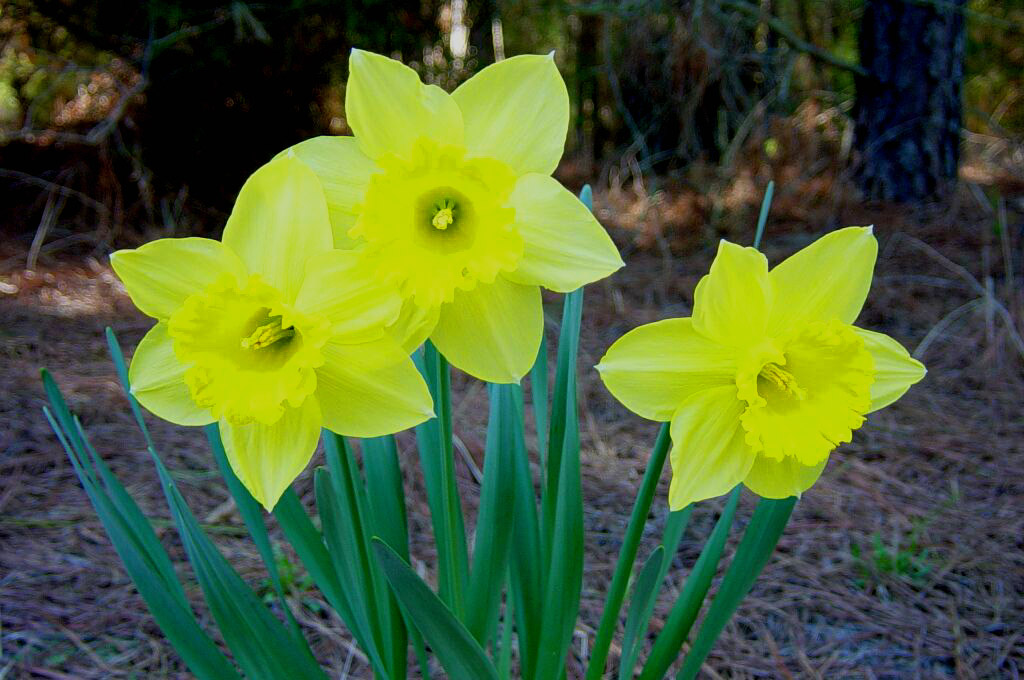MUSINGS
FROM THE MARSH
Ann
Woodlief
VIII.On "Come Heres"
Spring and summer bring all sorts of migrations to the Necks and Bay country. We eagerly await the coming of some of our favorite migrants, starting with the red-winged blackbirds and the bright green tree frogs, starting as peepers in the swamp. Then come blue and gold swallow-tail butterflies and colorful birds like the indigo buntings, the warblers, and the ruby-throated hummingbirds, flashes of color and bright sound to match the newly greening marsh grasses.
Butterfly on Butterfly Plant |
Goldfinch at Feeder | Two Cuddling Tree Frogs |
Each year we wonder-will they all return? After all, their habitats, here and further south, are threatened as trees come down for farmland, with their monocrops and pesticides, and temperatures keep warming. The odds are often not in favor of their survival. So each returnee is a kind of miracle.
Yet they come, though the numbers do seem to be dropping. For years, for example, we had a number of green tree frogs with red eyes in the crevices of our cedar house and hanging nightly on lighted windows, periodically hopping into our sun porch. This year we are lucky to see two frogs on the window in an evening, and none seem to have found the old favored crevices.
The native year-round wildlife might be a bit more reliable, although it too is feeling the pressures of farming and development. There are relatively fewer wild flowers to survive the vigorous roadside mowings and displacement by the more favored plants and flowers brought in from other places. Some, like the daffodils and Virginia lilies, are non-native species which have adapted very well, "naturalized," as they say. The native deer are thriving, but not the honey bees, European imports or "come heres" which have become so vital to agriculture.
Ladyslippers |
Daffodils |
"Come heres" is a term which seems to be unique to this area, and applies primarily to people who migrate, either on weekends and vacations, or permanently. After thirteen years, including two as weekend migrants, we are surprised to find that many "natives" consider us to be "come heres" still, though we feel quite naturalized.
What makes a native plant, animal, or person? Is it not whatever becomes naturalized, or finds a place where it may thrive? Only in Hawaii, an island nation which can give a time and place in history to the coming of many species, is it easy to distinguish between native and "alien" species. In Virginia, one could consider most of the people "alien," depending on the date of arrival, and even the Indians were once to be "come heres", living perhaps on native but now extinct animals like mastodons.
Unlike plants and animals, the people who migrate here, those "come heres," have made a deliberate choice to be here and no where else, whether full-time or on weekends. True, they may not make their living by farming, crabbing or cutting down trees, traditional careers for "natives." But they-we--may bring fresh appreciation of the values of the native and non-native wildlife and country ways that many so-called natives have become too accustomed to.
The problem comes when "come heres" want to recreate the world from which they migrated, and fail to appreciate many of the subtle or hidden values of their "new world." That was true in the 1600s, when new colonists were so blinded by the world from which they had come that they failed to understand the world in which they had to survive, and many paid a great price for that misunderstanding.
Many of us "come heres" are also "come back heres," having ancestors who were trying to reshape this particular world to fit their "alien" expectations. I was astonished to discover that some of my family roots were firmly in this region, in the Martiau, Reade, Warner, Smith, and Mathews families who were the earliest of non-Indian settlers. Many people, even very recent settlers today, would discover similar roots, were they to investigate closely. But I can and do choose a different path of naturalization than they did.
In Hawaii, there is a strong but futile movement to restore the plants and animals to an earlier "native" state, weeding out the aliens, many of which have naturalized. Some would even like to see the remnants of the nature culture take control, although few would reject the migratory tourists who appreciate their luaus. But at what point anywhere can one say, "stay just like this and never change"? Neither the natural world or the human world works like that.
Perhaps the answer is to value as much as possible the natural and cultural characteristics of any world into which we "come," and not try to transform it into whatever world we have come from. That requires a certain humility and eyes open to new possibilities, something that is not a strong element of our heritage.
Like those migratory birds, butterflies, and frogs, a certain amount of adaptation is required, although human adaptation is not nearly as natural. Perhaps we "come heres" need to pay attention to the values of those who are more established or naturalized in this rather special world of the Virginia rivers and bay. And those "natives" in turn need to realize that habit and custom can be blinding.
After all, we are all "come heres," whether of months, years, or generations, sharing a natural world which is threatened by our industrialized, urbanized, and super-sized culture. We have much in common.
Pleasant Living Magazine, September/October 2008


